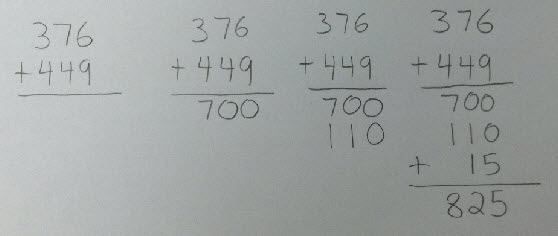As you all know there are many reasons to teach students different strategies and algorithms. We want our children to find the most efficient and accurate method that works for them. As teachers and parents, we want to encourage our children to constantly evaluate the methods they are using to see if it is indeed the most efficient and accurate method they could be using. Additionally, certain algorithms often times help to build foundational understandings necessary to learn more sophisticated and abstract algorithms or concepts.
So what about adding from left to right or using what many call the partial sums method?
Some advantages of working left to right:
Many students prefer it because they read from left to right and working first with the largest units yields a closer
approximation earlier. Additionally, this method is much easier for most people to use mentally.
Perhaps even more important, this partial sums or left to right method helps build an understanding of adding “like terms” (hundreds to hundreds, tens to tens, etc.)
This helps in the future with:
Adding decimals and making sure that the tenths are lined up with tenths, etc.
Adding fractions – 1/4 + 3/7 + 2/4 + 2/7 = 3/4 + 5/7
Algebra – 3 x + 5 y + 7 x = 10 x + 5 y
Watch the video below to learn how to use the left to right (partial sums) method of addition:
